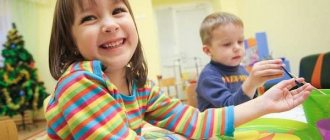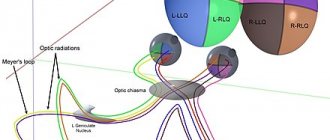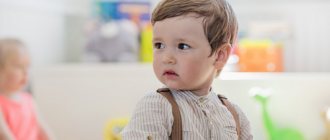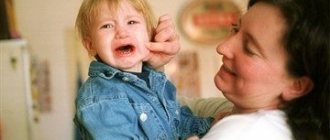The concept of social adaptation
Social adaptation is an integrative indicator of an individual’s state, reflecting his ability and ability to perform social functions, which include:
- appropriate perception of the surrounding world and one’s body;
- an adequate system of relationships with others, the ability to learn, work, and organize recreation;
- adaptability of behavior in accordance with the role expectations of other people.
Social adaptation is the process and result of an individual’s active adaptation to the conditions of a new social environment.
Content of social adaptation: the maximum possible convergence of value orientations and goals of the group and the individual belonging to this group. The individual’s assimilation of traditions, norms, and culture of the group, integration into the role structure of the group.
Socio-psychological adaptation is accompanied by the individual’s adaptation to new conditions, the realization of his interests, aspirations, and needs. Having entered a new social environment, a person becomes a full member of it, develops individuality and asserts himself.
Finished works on a similar topic
Course work Socialization and social adaptation 450 ₽ Essay Socialization and social adaptation 270 ₽ Test work Socialization and social adaptation 200 ₽
Get completed work or advice from a specialist on your educational project Find out the cost
Socio-psychological adaptation is accompanied by the development of social qualities of behavior, communication, and activity accepted in society, thanks to which the individual realizes his needs, aspirations, and interests.
Interdependence of socialization and social adaptation
The processes of socialization and social adaptation are interconnected; they reflect a single process of interaction between the individual and society.
Definition 1
Socialization is the process of an individual’s active reproduction of social experience, realized in activity and communication, the development of the individual under the influence of society, social institutions and agents of socialization. The process of socialization contributes to the development of psychological mechanisms of interaction between the individual and the environment, which are formed in the process of adaptation.
During socialization:
- the individual is an object that perceives, assimilates, norms, traditions, roles characteristic of a given society;
- formation, development and formation of personality occurs;
- ensures the normal functioning of the individual in society;
- the individual adapts to society.
Need advice on your academic work? Ask a question to the teacher and get an answer in 15 minutes! Ask a Question
Social adaptation is an important mechanism of socialization. Social transformation is a change in both external social relations and the inner world of a person.
It is necessary to take into account the ambiguous, complex nature of adaptation, the socio-political means that ensure its successful occurrence.
Note 1
An important condition for mass adaptation is the creation of material, economic, social, and organizational conditions that provide the opportunity to adapt to changes, use their positive opportunities, and mitigate emerging difficulties. Macrosocial and macroeconomic transformations must be understandable to the population. Often, for people to adapt, it is enough to create conditions conducive to benefiting from a new situation. A feeling of unadaptability and dissatisfaction to new situations can arise due to the inaccessibility of social and material benefits, due to psychological discomfort, inertia of consciousness, and the unfamiliarity of new forms of life.
Social adaptation is sustainable if there are no serious discrepancies between ideological foundations and private adaptive strategies of different social groups.
Sustainable adaptation to new conditions based on old means and goals is unlikely. With the spontaneous development of adaptive processes in society, the formation of only unstable adaptation is possible.
Social adaptation largely depends on the nature of interaction between society and the individual, which is explained by the discrepancy between the nature of psychological and social changes. The main reason for the delay in adaptive reactions to emerging situations is temporary barriers that impede the implementation of adaptive processes.
Adaptive processes relate to ideological foundations, the change of which involves a long period and is accompanied by changes in the value base of the individual.
If, in the process of life, a person easily develops adaptive strategies that allow him to effectively interact with different social institutions and communities, without coming into conflict with the norms, laws and traditions of society, while maintaining emotional satisfaction and psychological stability, we can talk about adaptation as a fait accompli.
Socialization and social adaptation
From the moment of birth, the baby enters the cultural environment of human society. The socialization of the child occurs in the family. From the first days of a baby’s life, loved ones act as intermediaries between the child and the world of people and objects around him. The mother tenderly coos, kisses, caresses, hugs the baby, feeds, swaddles, puts to bed. The child reacts sensitively to her touch, listens to her voice, and inhales smells. Active interactions with the mother contribute to the development of a newborn's sense of security and openness to the world. In such conditions, the socialization process proceeds successfully. The child begins to interact with other people and master various aspects of the surrounding reality.
In scientific research in the field of psychology, the term “socialization” does not have an unambiguous interpretation. Thus, L. S. Vygotsky defined the social situation of development as a special social space that an adult creates for the development of a child’s personality. Social space is determined by a system of social conditions that an adult organizes when interacting with an infant from the first days of his life.
A. N. Leontyev characterizes the social situation of development as a basic relationship between a child and an adult through activity. At the same time, he notes that the leading activity in infancy is the child’s communication with an adult, and in early childhood - objective activity.
TA. Repina believes that socialization is the assimilation of historical human experience that a child acquires with the help of adults and peers.
I. A. Korobeinikov argues that socialization is a dynamic psychosocial structure that ensures integration and reflection of various influences on the individual in the process of his development.
Thus, socialization includes both biological prerequisites and the very entry of a person into the social environment and expected social cognition, as well as the social acquisition of practical skills, including both the objective world of things and the entire set of functions, roles, norms, rights and responsibilities, reorganization of the world around us,” sums up B. D. Parygin.
The success of socialization is manifested in the child’s stable positive well-being, his activity, cognitive needs and is determined by the individual characteristics of the perception of the social situation of his development. This process is determined by the nature of the relationships that are established between the child and adults. Thus, socialization is the process and result of the assimilation of an individual’s active reproduction of social experience, carried out in communication and activity.
Social adaptation is the process and result of an individual’s active adaptation to the conditions of the social environment. In the process of life, a person quite often finds himself in an unfamiliar environment (for a child this is a trip to visit, a trip to the clinic, etc.), and he has to adapt to new conditions for himself.
Socialization and social adaptation - both of these phenomena express the process of interaction between society and the individual. They are interconnected and closely intertwined.
When a newborn is born, he finds himself in a social environment, and it is not so easy for him to socialize in it.
The newborn period (up to approximately 1-1.5 months) is the period of transition of the newborn from intrauterine to extrauterine development (L. S. Vygotsky). The main new formation of a newborn is individual mental life, the uniqueness of which lies in the predominance of undifferentiated experiences, the inseparability of oneself from the perception of the surrounding world. His sociality is characterized by complete passivity. The infant's further social life is an adaptation to reality through other people in a situation of cooperation.
An adult is the center of any situation. In his absence, the child is helpless, his activity is limited and constrained. With the help of an adult, the baby develops interest in the world around him and attention to his own and external irritations.
N. M. Lisina characterizes the first month of a newborn’s life as a phase of adaptation to external living conditions and the formation of the need for communication, which is not innate, but develops on the basis of organic needs (for food, warmth, etc.) and new impressions. The need for new impressions is concentrated on the adult as the most informative object in the world around him.
From the first days of a baby’s life in society, the mother is nearby. She influences him with tenderness and love. Her gentle touches and voice very soon begin to evoke responses from the baby. Frequent bodily contacts during communication and satisfaction of vital (life) needs contribute to the formation of the first social connections. From the first months of life, in the situation of emotional communication between a child and an adult, the baby’s attitude towards another person, towards himself, and towards the world around him is formed.
Emotional communication develops as a mutual way of understanding two partners and is formalized as a ritual based on the baby’s basic trust in the mother. Then the rituals of feeding, putting to sleep, and bathing appear. The baby calmly perceives all manipulations, since they are expected and familiar, and are performed in a certain sequence, which gives the child confidence in the stability of the world around him. This helps him enter the world of human relationships, master them, relying on a basic new formation - openness to the world, which arises under the influence of a loving, tender, sensitive mother.
Gradually, the child gains experience communicating with different people, first within the family circle and then outside it, successfully moving along the path of social development.
Rituals are the most important element of a child’s adaptation (E. Erickson). They represent a stable model of interaction not only with the mother, but also with other family members, which allows the child to gain rich experience in communicating with different people outside the family in an emotionally positive environment, ensuring successful entry into society.
The child’s ritual behavior manifests itself under the influence of surrounding adults with strict adherence to the regime and routine processes, which protects the baby’s nervous system from stress, contributes to the successful solution of problems in the social development situation, his stable behavior, and the development of personal qualities.
Ritual forms of behavior that a child learns with the help of an adult from the age of 8-10 months (the ability to thank, say hello, say goodbye, etc.) help the baby gain stability in the perception of the surrounding reality and evaluate himself through the eyes of an adult. The child actively strives to maintain the structure of the ritual in the future, sensitively reacts to its changes, be it washing hands before eating or words in a fairy tale (“granddaughter for grandmother, grandmother for grandfather, grandfather for turnip” - there should only be this order and no other). When the usual conditions change, the baby rebels and is indignant.
For example: they did not have time to deliver milk to the kindergarten for breakfast and the children were offered compote instead of coffee. Many refused to drink it, citing the fact that they did not want to go to sleep.
The scope of entry into society expands over time. Ritualized forms of behavior allow the child, with the help of adult reminders, to interact correctly with people around him, using general cultural norms of behavior: say hello, speak calmly, don’t make noise, know how to wait, etc.
A child is not only a good student. He himself strives to understand the world around him as quickly as possible. Visiting public places with his mother (hairdresser, store, etc.), the child observes the world of adults, remembers a lot: relationships between people, their assessment of what is happening, the attitude of adults towards him, which invariably affects the baby’s self-esteem, behavior, stimulates his social development .
Thus, the child gradually enters into the culture of the society in which he grows up. With the help of adults and independently, he learns the boundaries of what is permitted, begins to understand and evaluate the essence of his own actions and the actions of other children. Thus, the success of socialization is manifested in the formation of positive personal qualities in the child. This process is determined by the nature of the relationship that is established between a child and an adult. Pronounced sympathy for each other, stable positive emotions and satisfaction of the baby’s cognitive needs contribute to successful socialization. These conditions are easily achievable when beloved adults are nearby. The joy of communicating with them, their love accelerates the process of socialization of the child.
Meeting peers and forming positive relationships between children follows a unique development path that is different from the development of relationships with adults.
In the first year of life
the children hardly notice each other. Everyone is busy with themselves, with toys, and with close emotional communication with an adult. Hearing the child's cry, the baby looks in his direction in surprise and immediately turns away. By the end of the year, children who can walk can be combined into groups of 2-3 people in entertainment games (catch-up, hide-and-seek, etc.). Performing the same learned movement (action), children remain oriented towards the adult, although a surge of positive emotions causes their short-term indicative positive emotions towards each other.
Children aged 1 year - 1 year 3 months
the adult devotes the entire area of the group room to play, dispersing the game material in blocks (2 items each) away from each other so that the child, while playing, does not interfere with a friend and is not distracted from the game.
At the age of 1 year - 1 year 3 months, children learn about the surrounding objective world, trying to take possession of toys that fall into their field of vision. Being at the mercy of visual impressions, they do not notice their peer, and even if they pay attention to him, their contacts are short-lived, since the actions of their friend do not arouse interest in the children. And at the same time, the baby, turning his gaze to a peer who accidentally stopped nearby, tries to act with him as with a toy: he can pull his hand, his hair, touch his face, etc. At the same time, he compares him with himself: he looks at his legs and immediately turns his gaze to his own. This is how the baby learns his own body parts in comparison, perceiving his friend as an interesting object.
Closer to 1 year 6 months (1 year 3 months - 1 year 6 months), children can play close to each other around the barrier table. Mostly they play alone, occasionally glancing towards the child playing nearby or trying to attract his attention with a joyful cry about their play actions. This is how the first positive contacts between children are established. Children's sympathies for each other are manifested in independent motor activity (one ran, the second followed; one slid down the slide, followed by the second, etc.). The adult encourages children to communicate. He invites the kid standing to the side to observe the actions of his friend and try to repeat them. At this age, if a child begins to imitate, it is only those actions that he can perform independently.
Children over 1 year 6 months
Each child can calmly play next to their own toy, interrupting their own actions to watch the play of a child standing nearby. Now, at the suggestion of an adult, children can imitate actions that are new to them, which gives them confidence in their own abilities. However, the positive mutual influence of children on each other is still limited. They are more willing to accept the influence of an adult.
Children of this age have well-developed speech and play activities. The adult, relying on these children’s acquisitions, uses various reasons to maintain their friendly communication.
It can unite three to four children while demonstrating a new play action. Grouping into a subgroup has a positive effect on the overall development of children. In this case, learning is more effective, since children imitate adults and peers in actions and speech.
However, when selecting children for a subgroup, their individual typological characteristics should be taken into account:
• children perceive new things differently. Some are active, push away the adult’s hand (“I do it myself!”), others need repeated exercises together with an adult, others cannot do without immediate support;
• Children have different learning speeds. Some are no longer interested, while others have just begun to show interest in the actions of the teacher and other children;
• a shy baby will be extremely uncomfortable among active, energetic children. A child who begins to speak when placed in the company of talking peers will not utter a word.
When selecting children for a subgroup, the teacher sees each child, can influence him with a word, an example, and draw his attention to the actions of a friend. At the same time, he teaches kids to share toys, suggests how and with what they can help a friend. In this way, the basis is prepared for joint games, which, with the correct guidance of an adult, appear at the end of the second - beginning of the third year of life.
Closer to two years, children begin to unite around a large object (table, toy stove, etc.). Contacts between children are episodic and short-term. The actions of one child are imitated by another (one feeds the doll at the table, the second baby sits down next to his doll and begins to feed it). While playing side by side, they express their attitude to what is happening using individual words: “give”, “let go”, “no”, etc. An adult teaches them to construct sentences of 2-3 words.
The teacher teaches children interaction, mutual assistance (“Move Kolya’s car,” “There is a spoon near you, give it to Masha”), the ability to share toys (“Have you made soup? Give the saucepan to Sasha”), reinforces positive forms of interaction and prevents negative ones (children do not always can coordinate their actions and begin to conflict).
At the end of the second year of life
Children become more interested in a peer as a play partner. More and more often, children begin to talk to each other during the game, and carefully observe the actions of their peers. An adult teaches children to act in concert, performing the same action. What is much more difficult for them is the ability to act in turns, to coordinate their own actions with the actions of their comrades. Knowing this, an adult should, as often as possible, include exercises in children’s games that involve a sequence of actions, for example, you can ask them to take turns sliding down a slide, walking along a ribbed board, rolling a ball into a goal, etc.
The experience of communication, fluency in speech, and various activities with gaming material has a positive impact on the development of relationships in children of the third year of life.
At this age, playing together takes up more and more time. The children come to an agreement and begin to act together (“Let’s build a brick house!”). Separated actions also appear (driver - passenger). During the game, the adult reminds the rules of role behavior and teaches children to coordinate their actions with the actions of their peers.
When reading books, looking at pictures, watching cartoons, children with approximately the same level of development of skills and knowledge can be combined into a subgroup, taking into account the degree of their activity, socialization and communicative competence. Playing together with peers allows children to demonstrate their own successes, show independence, and initiative. Based on the responses of play partners, the child develops an idea of his own capabilities and increases self-esteem. In the process of observing the games of friends, the personal experience of each child is enriched; he begins to understand that he must not disturb others or distract them. By the end of the third year of life, children are able to adhere to established rules, can reprimand a friend who has become naughty, and begin to understand the condition of others. The child clearly displays feelings of resentment, disappointment, and joy for the achievements of others. Interaction with peers enriches the child’s inner world.
Orientation in space
A child is an active being. Being among people and feeling their friendliness, the child calmly enters society. At the same time, he actively strives to master various aspects of the reality around him. Spatial orientation is one of the conditions for social adaptation for him.
In the first year of life, a baby’s understanding of spatial relationships begins with an attempt to grab and hold a toy. He realizes the depth of space in his own exploratory actions, when he throws out of the arena everything that comes to hand in order to see what comes of it.
Orientation in space continues successfully when the question “Where (lamp, bear, etc.)?” the baby joyfully points at the object with his finger or turns his head in the direction where he was before. The child expects praise and is not at all embarrassed if the object is not in its original place. At the same time, he begins to show parts of his own body and closely examine his face. In the second year of life, he identifies not only the main parts of his own body, but also the body parts of story toys, animals, and birds.
A child of the second year of life begins to navigate the premises of a house, group, area, gets acquainted with functional (place to sleep, eat, etc.), and then with play areas (remembers the location of play materials), utility rooms.
In the third year of life, the child can easily navigate the room, when reminded by adults, he puts toys in their places and puts things in order.
At this age, he determines the location of objects in space relative to himself. First, he learns spatial relationships vertically (above - below), then horizontally (in front - behind). The adult first demonstrates spatial relationships to the child, then offers to act according to verbal instructions (by sentence), each time commenting on the actions, consolidating new ideas in the word: “Put the matryoshka doll on top!”, “Put the car behind the house!” and so on.
By forming elementary methods of orientation in space, an adult teaches children of the third year of life to move in a given direction (forward, backward, up, down), to determine the direction of movement away from themselves. These ideas are reinforced in everyday life (when a child goes down the stairs, down a slide), on a walk (“Let’s go forward,” says the teacher), in outdoor games, in physical education, on the way home (“How to get to our house?”) . The adult comments on the child’s actions, forming in him a clear correlation between the action and the word denoting it, his spatial direction to a specific object.
Children of the third year of life can understand such adverbs as: “close” - “far”, “low” - “high” and spatial prepositions: behind, by, before, about, before, through. In games with children, situations are created for their active use (“in front of the car,” “across the road,” etc.).
Time orientation
Socially designated time periods (parts of the day, seasons) serve as one of the factors in children’s adaptation to the social environment.
Time orientation is a difficult concept for children, since time cannot be determined in a practical way. The idea of time is based on visual-figurative thinking, which begins to form at the end of the third - beginning of the fourth year of life. However, a sensory-practical basis for the assimilation of temporary concepts can be formed in children of the second year of life during a walk, during routine processes, in everyday life, etc. For example, children aged 1 year 6 months - 1 year 8 months who returned from a walk, you can ask what they saw on the street, who they fed, etc. Children aged two years are able, after a nap, to use leading questions to tell about an interesting incident during a morning walk. The adult purposefully correlates temporary ideas about sharply contrasting parts of the day with the nature of the child’s activity (we played during the day, we slept at night); draws children's attention to the changes occurring in nature (it is light during the day, the sun is shining, it is dark at night). Children of the third year of life freely operate with these concepts in conversation, learn to use the greeting: “Good afternoon!”, the wish: “Good night!” To reinforce these concepts, excerpts from fairy tales, songs, and poetic texts are used: “It’s time to sleep! The bull fell asleep..." (A. Barto), "Darkness has come, don't go outside the gate..." (K. Chukovsky). For this purpose, you can also consider illustrations in books that depict the characteristic actions of characters in a given time period (a bear plays with a ball, a doll goes to bed). When looking at the illustration, you can ask the child: “What did you do during the day?”, ask to find a picture depicting the night, etc.
Children of the third year of life understand the meaning of the adverbs “fast” - “slow”, imitating an adult, learn to perform actions at different speeds.
At the end of the second - beginning of the third year of life, babies are introduced to the characteristic signs of the seasons. Preparation for the perception of the season (for example, winter) should begin while getting ready for a walk. (The teacher explains: “We put on fur coats and felt boots because it’s cold outside, it’s winter. Why do we need scarves and mittens?” Then he draws conclusions: “It’s cold outside in winter, there’s a lot of snow,” etc.) When going for a walk, these ideas are consolidated during observations of the striking phenomena of a given time of year, the behavior of people, domestic animals, and wintering birds. To reinforce ideas, appropriate paintings, excerpts from cartoons, and panels made by the teacher are also used.
Children of the third year of life happily engage in conversation with an adult, remembering in winter about summer holidays (based on visual references, for example, photographs brought by their parents). Thus, the idea of the time of year is closely linked to the personal experience of each child and becomes his personal acquisition.









